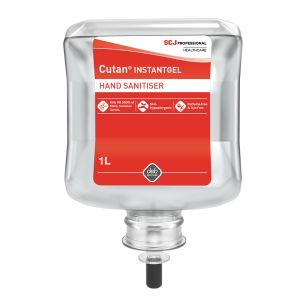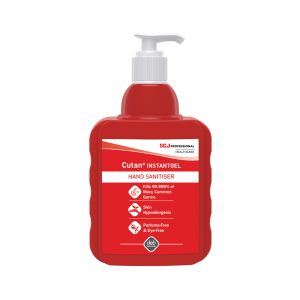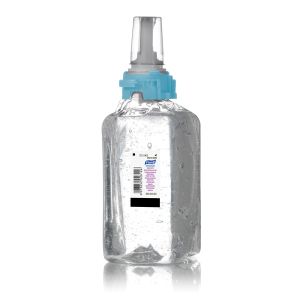Hand Hygiene: Step 2 - Hand Sanitising
As part of our complete guide to hand hygiene we take a look at the second step – Hand Sanitising.
For those times when soap and water are not available, using hand sanitiser on your hands is the most effective way to kill many common germs and bacteria present on the skin. In healthcare environments, alcohol-based sanitiser is the preferred active biocide for skin sanitising without the need for rinsing.
We have looked at the best hand sanitising technique in a step-by-step guide to ensure that you maintain the highest levels of hand hygiene and infection control.
How long should sanitising your hands take?
On average you should spend between 20 – 30- seconds to complete these hand sanitising steps.
Before you start…
Take off all rings, watches and bracelets before you begin sanitising your hands. Make sure your hands are visibly clean before sanitising, if your hands have dirt and grime on them then you will need to wash your hands first.
If you don’t know the correct hand washing procedure our handy guide to hand washing from step 1 can help.


Step 1 – Cup hand and apply one shot of hand sanitiser
Hand sanitiser is available via wall dispensers, pump bottles and personal issue bottles that healthcare workers clip onto their belts for convenience.


Step 2 – Rub hands palm to palm


Step 3 - Rub back of each hand with the palm of the other hand with fingers interlaced


Step 4 – Rub palm to palm with fingers interlaced


Step 5 – Rub back of fingers to opposing palms with fingers interlocked


Step 6 – Rub each thumb clasped in opposite hand using rotational movement
Thumbs are regularly missed by people when sanitising their hands, so make a conscious effort to clean these.


Step 7 – Rub tips of fingers in opposite palm in a circular motion


Step 8 – Rub each wrist with the opposite hand


When should you sanitise your hands?
The World Health Organization “Five Moments for Hand Hygiene” defines when healthcare workers should perform hand hygiene as:
- before touching a patient
- before clean/aseptic procedures
- after body fluid exposure/risk
- after touching a patient
- after touching patient surroundings
Based on the WHO approach hand sanitising should be carried out:
• Before entering and leaving patient care environments eg. Wards and treatment rooms.
• Before preparing or handling food.
• Before and after dressing wounds, handling catheters and IV lines.
• Before and after touching notes, telephones, computer ancillaries i.e. mouse, keyboard.
• Prior to surgical procedure, after handwashing.
• After body fluid exposure.
• After handling dirty laundry.
• Before and after donning sterile gloves.


The benefits of using a hand sanitiser:
• Ease and speed of use resulting in the rapid reduction in the numbers of micro-organisms present on the skin.
• When used frequently they can be less harmful to the skin than an equivalent number of hand washes.
Studies* have shown that alcohol-based hand sanitisers can be less damaging to the skin that then normal washing process. The physical process of hand washing, even with mild soaps, can cause defatting of the skin compared to the lighter spreading action of alcohol-based hand sanitisers.
*Boyce et al 2000; Newman and Seitz 1990





